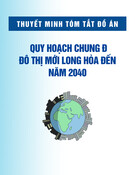
RESEARC H Open Access
Validation study of a web-based assessment of
functional recovery after radical prostatectomy
Andrew J Vickers
1*
, Caroline J Savage
1
, Marwan Shouery
1
, James A Eastham
2
, Peter T Scardino
2
, Ethan M Basch
1
Abstract
Background: Good clinical care of prostate cancer patients after radical prostatectomy depends on careful
assessment of post-operative morbidities, yet physicians do not always judge patient symptoms accurately.
Logistical problems associated with using paper questionnaire limit their use in the clinic. We have implemented a
web-interface ("STAR”) for patient-reported outcomes after radical prostatectomy.
Methods: We analyzed data on the first 9 months of clinical implementation to evaluate the validity of the STAR
questionnaire to assess functional outcomes following radical prostatectomy. We assessed response rate, internal
consistency within domains, and the association between survey responses and known predictors of sexual and
urinary function, including age, time from surgery, nerve sparing status and co-morbidities.
Results: Of 1581 men sent an invitation to complete the instrument online, 1235 responded for a response rate of
78%. Cronbach’s alpha was 0.84, 0.86 and 0.97 for bowel, urinary and sexual function respectively. All known
predictors of sexual and urinary function were significantly associated with survey responses in the hypothesized
direction.
Conclusions: We have found that web-based assessment of functional recovery after radical prostatectomy is
practical and feasible. The instrument demonstrated excellent psychometric properties, suggested that validity is
maintained when questions are transferred from paper to electronic format and when patients give responses that
they know will be seen by their doctor and added to their clinic record. As such, our system allows ready
implementation of patient-reported outcomes into routine clinical practice.
Background
Radical prostatectomy is a mainstay of treatment for
early stage prostate cancer. Although associated with
excellent rates of cure[1], the procedure leads to erectile
and urinary dysfunction. Patients typically experience
severe urinary incontinence and erectile dysfunction
immediately after surgery, but recover gradually over the
course of the first post-operative year[2]. Nonetheless,
some patients experience long-term difficulties with sex-
ual function and urinary control[3]. The uncertain nat-
ure of return to function is a major source of anxiety
for prostate cancer patients recovering from surgery.
There are treatments available for urinary and erectile
dysfunction after radical prostatectomy. Pelvic floor
exercises ("Kegels”) have been shown to improve return
of urinary control[4], and procedures such as the male
sling can be successful for patients with persistent
incontinence[5]. Comparably, PDE5 inhibitors such as
Viagra can be used to treat post-prostatectomy erectile
dysfunction with some urologists advocating daily use
for the first few months after surgery as a form of
“penile rehabilitation”[6,7].
Clearly, good clinical care of patients after radical
prostatectomy depends on careful assessment of post-
operative morbidities. Yet there is accumulating
evidence that physicians do not always judge patient
symptoms accurately. This has been demonstrated in
fields as diverse as chemotherapy[8], primary care[9]
and dermatology[10]. Specifically with respect to radical
prostatectomy, Sonn et al. compared the results of
patient questionnaires with clinical documentation of
their urologists in 1,366 men following curative treat-
ment for prostate cancer, about 70% of whom
* Correspondence: vickersa@mskcc.org
1
Department of Epidemiology and Biostatistics, Health Outcomes Group
Memorial Sloan-Kettering Cancer Center, 1275 York Avenue New York, NY
10065 USA
Full list of author information is available at the end of the article
Vickers et al.Health and Quality of Life Outcomes 2010, 8:82
http://www.hqlo.com/content/8/1/82
© 2010 Vickers et al; licensee BioMed Central Ltd. This is an Open Access article distributed under the terms of the Creative Commons
Attribution License (http://creativecommons.org/licenses/by/2.0), which permits unrestricted use, distribution, and reproduction in
any medium, provided the original work is properly cited.

underwent surgery. Physicians consistently underesti-
mated patient dysfunction when compared to question-
naire responses from patients. For example, at long term
follow-up, 42% of patients reported urinary dysfunction
whereas physicians documented urinary dysfunction
only in about half as many patients (22%). Similarly,
whereas nearly all patients (94%) reported some level of
erectile dysfunction, only 62% of patients were coded as
such by their urologist[11].
While patient-reported outcomes are clearly prefer-
able, considerable logistical problems are associated with
their integration into routine clinical care. Paper ques-
tionnaires need to be administered to patients, checked
and then the responses tallied, for example, by summing
specific questions to calculate domain specific scores,
with the results then entered into the clinical record. All
this must be done by busy clinic staff in a timely man-
ner such that the doctor can access the questionnaire
results before the consultation.
At Memorial Sloan-Kettering Cancer Center, we have
started to integrate electronic recording of patient-
reported questionnaires into our clinics. These allow
automatic checking of patient responses and direct port-
ing of summary information into the clinic record.
Known as the STAR system ("Symptom Tracking and
Reporting”), this system was initially developed for use by
patients receiving outpatient chemotherapy and was
found to be feasible for both clinic-based and home-
based internet reporting in diverse populations, including
those with no prior computer experience, lower educa-
tional levels, and high symptom burdens[12,13]. Use of
the platform was expanded into the clinical trial setting
with ongoing national multi-center evaluations in the
National Cancer institute-sponsored cooperative groups,
and a system in development for the NCI under contract
based on the STAR model, called the PRO-CTCAE[14].
STAR is a flexible interface which allows administra-
tion of questions to patients via the web, either from
clinic-based computers or from home[15]. Reminder
emails can be triggered to patients who do not complete
scheduled questionnaires. The platform sends auto-
mated notifications to study staff if a patient misses a
scheduled questionnaire, or reports a concerning symp-
tom which merits clinical evaluation. Data collected by
STAR are exported to the electronic health record and
clinical trials database for clinicians and investigators to
view results.
We adapted the STAR system to record data on func-
tional recovery after radical prostatectomy. Here we
report our initial experience of obtaining patient-
reported outcomes through a web interface. In particu-
lar, we were interested in patient response rates and in
evaluating the psychometric validity of our instrument.
Methods
Development of the instrument
We have previously validated a questionnaire for post-
treatment recovery in prostate cancer patients[16]. This
questionnaire was deemed too long and complex for
web implementation as it included 68 questions, some
of which had up to 18 response options. Accordingly,
we choose a subset of questions for our web-instrument.
We chose six questions from the erectile function
domain that constitute the International Index of Erec-
tile Function-6 (IIEF-6)[17], a well-validated and widely
used instrument. We then analyzed data from question-
naire responses of radical prostatectomy patients to
identify 6 of 16 questions from the urinary domain that
demonstrated good internal consistency (Cronbach’s
alpha of 0.82) and, when summed, had excellent correla-
tion with the full urinary domain score (0.90). Bowel
symptoms are rare after radical prostatectomy, and we
foundthatjusttwoquestionsaboutbotherfrombowel
symptoms that had good correlation (0.91) with the
total of all questions from the bowel domain score. We
added a simple 0 - 10 scale of global health related qual-
ity of life to give a total of 15 questions.
Having chosen the items for our instrument, we added
two interactive features. First, the IIEF6 asks several
questions about erectile function that depend on sexual
activity. For example, a question about erection fre-
quency and another about erection hardness both have
“no sexual activity”as a response. Accordingly, we
designed the questionnaire so that if a patient responded
“no sexual activity”to the first question about erections,
further questions were skipped and scored as zero. Sec-
ond, assessment of recovery after radical prostatectomy
is subject to what is known as interval censoring.
A patient given a questionnaire at three and six months
and who, for example, reports use of incontinence pads
at the first but not the second questionnaire, is typically
recorded as having regained continence at six months.
In truth, the patient likely stopped using pads at some
point in the preceding three month period, and not on
the exact day that the questionnaire was administered.
Thus, when a patient first responds that he is not using
pads, an additional question is implemented concerning
when the patient first stopped needing pads (within the
past month; 1 - 2 months; 2 - 3 months; more than
3 months). Similarly, when a patient first reports erec-
tions sufficient for penetration, he is asked about when
this was first achieved. Additional file 1 shows the
instrument and scoring.
Informatics implementation
STAR hardware includes two servers that reside in the
MSKCC New Jersey Data Center. One is the web server
Vickers et al.Health and Quality of Life Outcomes 2010, 8:82
http://www.hqlo.com/content/8/1/82
Page 2 of 7

and is located in the “DMZ”where it is accessible to the
Internet. The other server is the database server and is
completely protected by the MSKCC firewall.
The web server uses Microsoft Internet Information
Services (IIS) and Secure Sockets Layer (SSL) encryption
to protect the data through the Internet. The web appli-
cation is developed using Microsoft .Net technologies
and uses the highest security and privacy features that
exist to date.
The database server hosts Microsoft SQL server where
the data is stored and backed up daily. All information
in STAR is saved in the database where it is completely
protected by the firewall.
STAR database shares information with CAISIS, an
open source, web-based cancer data management system
that is used for clinical management of patients at
MSKCC. Patient information is entered in CAISIS and
“pulled”by STAR. STAR in turn registers the patients
automatically and emails them in due time to take the
survey, based on surgery and appointment dates pro-
videdbyCAISIS.Oncethesurveyistaken,STARwill
“push”the data back to CAISIS where it can be seen by
clinicians and downloaded for research purposes.
Implementation of the web-based tool in clinical practice
Patients who provide an email address to the hospital
are sent an email inviting them to complete a question-
naire at 3, 6, 9, 12, 18, 24, 36, and 48 months after sur-
gery. However, patients with a clinic appointment up to
six weeks before any of these time points are sent
reminder emails two weeks prior to their appointment
so that their responses are available to their urologist in
good time. The text of the email reminder is given in
additional file 2: the key point is that patients are told
that their answers will go directly into their clinic record
so that their doctors can see how they are doing.
As an attempt to improve clinical practice, the web-
based tool was not subject to an IRB protocol. Data for
this evaluation was obtained under an IRB waiver for
routinely collected data to be used for research purposes.
Statistical Considerations
Our initial aim was to investigate the validity of the STAR
questionnaire to assess functional outcomes following
radical prostatectomy. For assessment of internal consis-
tency within domains, Cronbach’s alpha coefficient was
calculated for all domains of the questionnaire, except
overall quality of life, which is a single-item measure.
To assess instrument validity, we evaluated the asso-
ciation between survey responses and known predictors
of sexual and urinary function. To account for men who
completed more than one survey, we used multivariable
generalized estimating equations. Pre-specified predic-
tors included time from surgery, age at surgery, nerve
sparing status (none, unilateral or bilateral), comorbid-
ities (0, 1 or >1). Separate models were built for the out-
comes of urinary and sexual function. For these
analyses, sexual and urinary function domains were
rescaled to a 0 - 100 range, in order to allow direct
comparison. To account for a possible non-linear rela-
tionship between recovery of function and either time
fromsurgeryorage,weincludednon-linearterms
(restricted cubic splines with knots at the tertiles). We
hypothesized that valid measures of erectile and urinary
function would show decreasing scores with age and
comorbidity, and increasing scores with time from sur-
gery, and nerve sparing surgery.
We also compared the surgeon and patient-reported
assessments of function. We restricted this analysis to
occasions when the patient- and physician-reported
assessment where within six weeks of one another. We
used the first eligible assessment time for patients with
more than one time point for which both patient- and
physician reported data were available. Physician-
reported erectile and urinary function are on a five
point scale. Sexual function was defined as physician-
assessed score of 1 or 2 (normal, full erections or full,
but diminished erections satisfactory for sexual activity);
continence as classified as physician-assessment of 1 (no
pads). All analyses were conducted using Stata 11.0
(Stata Corp., College Station, Texas).
Results
The STAR system was implemented at MSKCC in one
surgeon’s clinic as a pilot in April 2009. The system was
made available in all clinics in June 2009. All new
patients undergoing radical prostatectomy with Email
addresses were eligible as well as patients treated up to
four years before the start of the project (April 2005).
The database was closed for analysis in February 2010.
A total of 1,581 men had been sent at least one email
inviting them to complete an online questionnaire in
this time (approximately 50% of patients provided an
email address). Of these, 1,235 completed at least one
survey for an overall response rate of 78%. Russian and
Spanish language versions of the instrument are avail-
able by clicking a link on the STAR portal; however,
fewer than 1% of users accessed the questionnaire in a
foreign language. Table 1 shows the characteristics of
the men who did and did not complete a survey. Overall
there were no obvious differences between groups
(Table 1).
Nearly all surveys were completed in their entirety
(n = 1761; 93%); 78 (4%) questionnaires included one
missed question and only 48 (3%) included more than
one missed question.
Table 2 shows Cronbach’s alpha coefficient 0.84, 0.86 and
0.97 for bowel, urinary and sexual function respectively. To
Vickers et al.Health and Quality of Life Outcomes 2010, 8:82
http://www.hqlo.com/content/8/1/82
Page 3 of 7

test whether the three questionnaires were measuring sepa-
rate aspects of function, we calculated correlations for all
pairs of questions. Survey questions assessing the same
function (potency, continence or bowel function) were
more highly correlated (mean within-function correlation
coefficients of 0.83, 0.54 and 0.74 for erectile, urinary and
bowel function) than measures assessing different functions
(mean between-function correlation coefficients of 0.17,
0.15 and 0.31 for erectile and urinary, erectile and bowel,
and urinary and bowel respectively).
We hypothesized that, if our instrument was valid,
there should be a positive correlation between function
and quality of life, with urinary function having a higher
correlation than sexual function. This is indeed what we
found: the correlations between total sexual and urinary
functionandoverallqualityoflifewere0.27and0.47,
respectively.
Table 3 shows that age, time for surgery, and nerve
sparing status were all significantly associated with both
urinary and sexual function in the hypothesized direc-
tion. An increasing number of comorbidities was signifi-
cantly associated with poorer urinary and sexual
function (p = 0.028 and p = 0.019, respectively). Men
with three or more comorbidities had on average a
7 point lower urinary score and a 13 point lower sexual
function score than those without any comorbidity.
Figure 1 illustrates the association between time from
surgery and recovery of function. We hypothesized that
Table 1 Summary of patient characteristics
All men who completed a questionnaire
N = 1235
Men who were invited, but did not complete questionnaire
N = 346
Age at surgery (years) 62 (57, 67) 60 (56, 65)
PSA (ng/ml) 5.00 (3.48, 6.95) 5.30 (3.98, 7.14)
Pathologic Gleason Score
<= 6 250 (20%) 34 (24%)
7 816 (66%) 90 (63%)
>= 8 169 (14%) 19 (13%)
Lymph node involvement
LN+ 91 (8%) 9 (6%)
LN- 1019 (83%) 119 (83%)
No LND 6 (1%) 0 (0%)
Unknown/missing 125 (10%) 15 (10%)
Extracapsular extension 659 (58%) 73 (55%)
Positive Surgical Margins 153 (12%) 13 (9%)
Seminal Vesicle Invasion 85 (7%) 7 (5%)
Nerve sparing status
None 235 (19%) 24 (17%)
Unilateral 174 (14%) 24 (17%)
Bilateral 826 (67%) 95 (66%)
Number of comorbidities
0 475 (38%) 46 (32%)
1 421 (34%) 58 (41%)
2 249 (20%) 28 (20%)
3+ 89 (7%) 11 (8%)
All values are median (IQR) or frequency (proportion).
Table 2 Summary of response rate and average scores for each domain
Number of items Median (IQR) score (original scaling) Range of scores (original scaling) Cronbach’s alpha
Sexual function 6 8 (3, 23) 1-30 0.97
Urinary function 5 18 (15, 20) 0-21 0.86
Bowel function 2 8 (7, 8) 0-8 0.84
Overall quality of life 1 8 (7, 9) 0-10 -
Men who completed more than one survey are represented more than once.
Vickers et al.Health and Quality of Life Outcomes 2010, 8:82
http://www.hqlo.com/content/8/1/82
Page 4 of 7

erectile and urinary function would increase with time
from surgery, and that erectile function would continue
toimproveforalongertimethanurinaryfunction.
Both erectile and urinary function improve significantly
(both p < 0.001), particularly within the first year after
surgery; as hypothesized, erectile function continues to
improve beyond one year, whereas urinary function
plateaus.
Our second hypothesis was that both erectile and
urinary function would decrease with age, and that this
decrease would be larger for sexual as compared to
urinary function. Figure 2 illustrates older men have
much lower sexual function one year after surgery: at
age 55 the mean adjusted 12 month erectile function
score was 58 (95% CI: 53, 64); by age 70 it had declined
to 34 (95% CI: 28, 40). Urinary function appeared to
remain relatively constant until about age 70 (adjusted
urinary scores were 86 [95% CI: 83, 90] and 82 [95% CI:
78, 86] at age 55 and 70, respectively), after which point
we saw small decreases in reported function (adjusted
score at age 75 was 75 [95% CI: 68, 82]).
Our third hypothesis was that patient-reported sexual
and urinary function scores would predict physician-
reported assessments of potency and continence.
Among those with patient and physician reported scores
that were measured within six weeks of each other
(n = 365 and 469 for sexual and urinary function,
respectively), we found that patient-reported sexual and
urinary function scores predicted physician-assessed
function with high discrimination (sexual function AUC:
0.86 and urinary function AUC: 0.87; p < 0.001 for
both).
Discussion
We have found that web-based assessment of functional
recovery after radical prostatectomy is practical and fea-
sible. The tool clearly has good patient acceptability, as
evidenced by the very high response rate of 78%. Indeed,
we believe that this is an underestimate as it includes as
non-responders patients who gave non-functioning
email addresses. For example, we became aware that
some of the addresses given by patients were those of
relatives.
The patient-reported outcomes instrument has excellent
psychometric properties. There was very high internal
consistency within domains, and excellent validity: domain
scores not only predicted overall health related quality of
life, but do so exactly as hypothesized, with urinary
Table 3 Predictors for urinary and sexual function scores
Urinary function Sexual function
Coefficient (95% CI) P value Coefficient (95% CI) P value
Age * 0.0011 * <0.001
Time from surgery * <0.001 * <0.001
Nerve sparing status <0.001 <0.001
None Reference Reference
Unilateral 9.0 (3.8, 14.2) 3.0 (-4.8, 10.7)
Bilateral 9.1 (5.0, 13.1) 17.2 (11.2, 23.2)
Comorbidities 0.028 0.019
0 Reference Reference
1 2.0 (-1.4, 5.3) -3.3 (-8.3, 1.7)
2 -1.4 (-5.4, 2.7) -6.5 (-12.5, -0.4)
3+ -6.9 (-13.0, -0.8) -13.1 (-22.2, -3.9)
Scores have been rescaled so that the maximum scores for both urinary and sexual function are 100.
*includes non-linear terms (see figure 1 and 2)
Figure 1 Recovery of sexual (black lines) and urinary (gray
lines) function by time from surgery. Values are reported for a
man with one comorbidity who received bilateral nerve sparing and
was age 62 at surgery. Scores have been rescaled so that the
maximum scores for both urinary and sexual function are 100.
Dashed lines are 95% CI.
Vickers et al.Health and Quality of Life Outcomes 2010, 8:82
http://www.hqlo.com/content/8/1/82
Page 5 of 7



![Báo cáo seminar chuyên ngành Công nghệ hóa học và thực phẩm [Mới nhất]](https://cdn.tailieu.vn/images/document/thumbnail/2025/20250711/hienkelvinzoi@gmail.com/135x160/47051752458701.jpg)






















